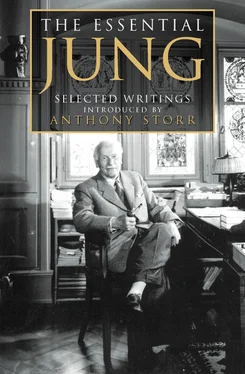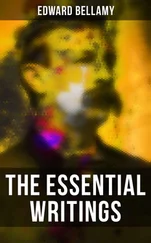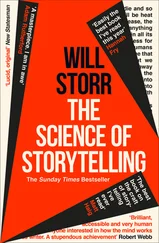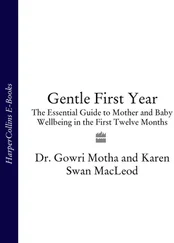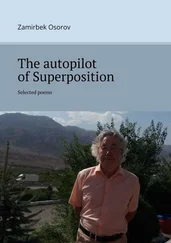If, therefore, we speak of the anima of a man, we must logically speak of the animus of a woman, if we are to give the soul of a woman its right name. Whereas logic and objectivity are usually the predominant features of a man’s outer attitude, or are at least regarded as ideals, in the case of a woman it is feeling. But in the soul it is the other way round: inwardly it is the man who feels, and the woman who reflects. Hence a man’s greater liability to total despair, while a woman can always find comfort and hope; accordingly a man is more likely to put an end to himself than a woman. However much a victim of social circumstances a woman may be, as a prostitute for instance, a man is no less a victim of impulses from the unconscious, taking the form of alcoholism and other vices.
As to its common human qualities, the character of the anima can be deduced from that of the persona. Everything that should normally be in the outer attitude, but is conspicuously absent, will invariably be found in the inner attitude. This is a fundamental rule which my experience has borne out over and over again. But as regards its individual qualities, nothing can be deduced about them in this way. We can only be certain that when a man is identical with his persona, his individual qualities will be associated with the anima. This association frequently gives rise in dreams to the symbol of psychic pregnancy, a symbol that goes back to the primordial image (q.v.) of the hero’s birth. The child that is to be born signifies the individuality, which, though present, is not yet conscious. For in the same way as the persona, the instrument of adaptation to the environment, is strongly influenced by environmental conditions, the anima is shaped by the unconscious and its qualities. In a primitive milieu the persona necessarily takes on primitive features, and the anima similarly takes over the archaic (q.v.) features of the unconscious as well as its symbolic, prescient character. Hence the “pregnant,” “creative” qualities of the inner attitude.
Identity (q.v.) with the persona automatically leads to an unconscious identity with the anima because, when the ego is not differentiated from the persona, it can have no conscious relation to the unconscious processes. Consequently, it is these processes, it is identical with them. Anyone who is himself his outward role will infallibly succumb to the inner processes; he will either frustrate his outward role by absolute inner necessity or else reduce it to absurdity, by a process of enantiodromia (q.v.). He can no longer keep to his individual way, and his life runs into one deadlock after another. Moreover, the anima is inevitably projected upon a real object, with which he gets into a relation of almost total dependence. Every reaction displayed by this object has an immediate, inwardly enervating effect on the subject. Tragic ties are often formed in this way (v. Soul-image).
49. SOUL-IMAGE [Anima / Animus]. The soul-image is a specific image (q.v.) among those produced by the unconscious. Just as the persona (v. Soul), or outer attitude, is represented in dreams by images of definite persons who possess the outstanding qualities of the persona in especially marked form, so in a man the soul, i.e., anima, or inner attitude, is represented in the unconscious by definite persons with the corresponding qualities. Such an image is called a “soul-image.” Sometimes these images are of quite unknown or mythological figures. With men the anima is usually personified by the unconscious as a woman; with women the animus is personified as a man. In every case where the individuality (q.v.) is unconscious, and therefore associated with the soul, the soul-image has the character of the same sex. In all cases where there is an identity (q.v.) with the persona, and the soul accordingly is unconscious, the soul-image is transferred to a real person. This person is the object of intense love or equally intense hate (or fear). The influence of such a person is immediate and absolutely compelling, because it always provokes an affective response. The affect (q.v.) is due to the fact that a real, conscious adaptation to the person representing the soul-image is impossible. Because an objective relationship is non-existent and out of the question, the libido (q.v.) gets dammed up and explodes in an outburst of affect. Affects always occur where there is a failure of adaptation. Conscious adaptation to the person representing the soul-image is impossible precisely because the subject is unconscious of the soul. Were he conscious of it, it could be distinguished from the object, whose immediate effects might then be mitigated, since the potency of the object depends on the projection (q.v.) of the soul-image.
For a man, a woman is best fitted to be the real bearer of his soul-image, because of the feminine quality of his soul; for a woman it will be a man. Wherever an impassioned, almost magical, relationship exists between the sexes, it is invariably a question of a projected soul-image. Since these relationships are very common, the soul must be unconscious just as frequently – that is, vast numbers of people must be quite unaware of the way they are related to their inner psychic processes. Because this unconsciousness is always coupled with complete identification with the persona, it follows that this identification must be very frequent too. And in actual fact very many people are wholly identified with their outer attitude and therefore have no conscious relation to their inner processes. Conversely, it may also happen that the soul-image is not projected but remains with the subject, and this results in an identification with the soul because the subject is then convinced that the way he relates to his inner processes is his real character. In that event the persona, being unconscious, will be projected on a person of the same sex, thus providing a foundation for many cases of open or latent homosexuality, and of father-transferences in men or mother-transferences in women. In such cases there is always a defective adaptation to external reality and a lack of relatedness, because identification with the soul produces an attitude predominantly oriented to the perception of inner processes, and the object is deprived of its determining power.
If the soul-image is projected, the result is an absolute affective tie to the object. If it is not projected, a relatively unadapted state develops, which Freud has described as narcissism. The projection of the soul-image offers a release from preoccupation with one’s inner processes so long as the behaviour of the object is in harmony with the soul-image. The subject is then in a position to live out his persona and develop it further. The object, however, will scarcely be able to meet the demands of the soul-image indefinitely, although there are many women who, by completely disregarding their own lives, succeed in representing their husband’s soul-image for a very long time. The biological feminine instinct assists them in this. A man may unconsciously do the same for his wife, though this will prompt him to deeds which finally exceed his capacities whether for good or evil. Here again the biological masculine instinct is a help.
If the soul-image is not projected, a thoroughly morbid relation to the unconscious gradually develops. The subject is increasingly overwhelmed by unconscious contents, which his inadequate relation to the object makes him powerless to assimilate or put to any kind of use, so that the whole subject-object relation only deteriorates further. Naturally these two attitudes represent the two extremes between which the more normal attitudes lie. In a normal man the soul-image is not distinguished by any particular clarity, purity, or depth, but is apt to be rather blurred. In men with a good-natured and unaggressive persona, the soul-image has a rather malevolent character. A good literary example of this is the daemonic woman who is the companion of Zeus in Spitteler’s Olympian Spring. For an idealistic woman, a depraved man is often the bearer of the soul-image; hence the “saviour fantasy” so frequent in such cases. The same thing happens with men, when the prostitute is surrounded with the halo of a soul crying for succour.
Читать дальше
